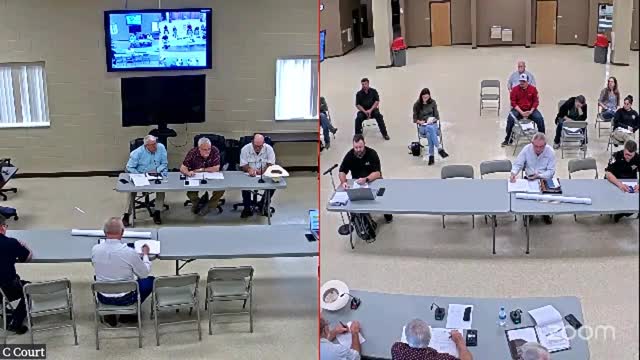Harris County updates drainage criteria based on Atlas 14 rainfall standards
December 16, 2024 | Liberty County, Texas
This article was created by AI summarizing key points discussed. AI makes mistakes, so for full details and context, please refer to the video of the full meeting. Please report any errors so we can fix them. Report an error »

In a recent workshop held by the Liberty County Commissioners Court, significant discussions centered around updated drainage regulations aimed at improving flood management in the region. The meeting, which took place on December 16, 2024, highlighted the adoption of new standards based on the National Oceanic and Atmospheric Administration's (NOAA) Atlas 14 rainfall data, which reflects changing rainfall patterns and flood risks.
One of the key proposals discussed was the incorporation of five new standards for residential development, particularly for properties one acre or larger. These standards include a minimum detention factor of 0.55 acre-feet per acre, prohibiting the use of hydrograph timing as a substitute for detention unless it directly drains into major rivers or Galveston Bay, and establishing a minimum finished floor elevation to the 500-year floodplain level. The 500-year floodplain is considered a critical threshold for flood risk management, and the new standards aim to ensure that developments are better equipped to handle extreme weather events.
The workshop also addressed the challenges of implementing these standards, particularly in areas lacking detailed floodplain mapping. While the new regulations are designed to enhance safety and resilience against flooding, officials acknowledged that not all regions within Liberty County have documented floodplains, complicating the enforcement of the no net fill requirement in the 500-year floodplain.
Commissioners expressed optimism that the updated criteria would not significantly hinder development projects, as many existing calculations already align with the new standards. The discussion emphasized a collaborative approach with the development community to refine these regulations over time, ensuring they are practical and effective.
As Liberty County continues to adapt to changing climate conditions, these proposed drainage regulations represent a proactive step towards safeguarding residents and properties from future flooding risks. The next steps will involve further discussions and potential adjustments to the criteria as the county works to implement these important changes.
One of the key proposals discussed was the incorporation of five new standards for residential development, particularly for properties one acre or larger. These standards include a minimum detention factor of 0.55 acre-feet per acre, prohibiting the use of hydrograph timing as a substitute for detention unless it directly drains into major rivers or Galveston Bay, and establishing a minimum finished floor elevation to the 500-year floodplain level. The 500-year floodplain is considered a critical threshold for flood risk management, and the new standards aim to ensure that developments are better equipped to handle extreme weather events.
The workshop also addressed the challenges of implementing these standards, particularly in areas lacking detailed floodplain mapping. While the new regulations are designed to enhance safety and resilience against flooding, officials acknowledged that not all regions within Liberty County have documented floodplains, complicating the enforcement of the no net fill requirement in the 500-year floodplain.
Commissioners expressed optimism that the updated criteria would not significantly hinder development projects, as many existing calculations already align with the new standards. The discussion emphasized a collaborative approach with the development community to refine these regulations over time, ensuring they are practical and effective.
As Liberty County continues to adapt to changing climate conditions, these proposed drainage regulations represent a proactive step towards safeguarding residents and properties from future flooding risks. The next steps will involve further discussions and potential adjustments to the criteria as the county works to implement these important changes.
View full meeting
This article is based on a recent meeting—watch the full video and explore the complete transcript for deeper insights into the discussion.
View full meeting
